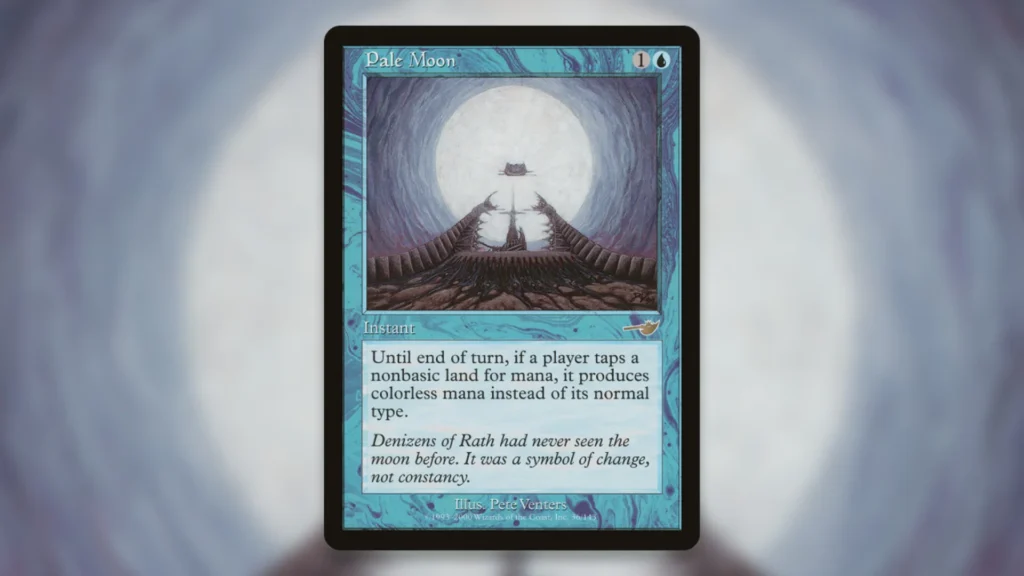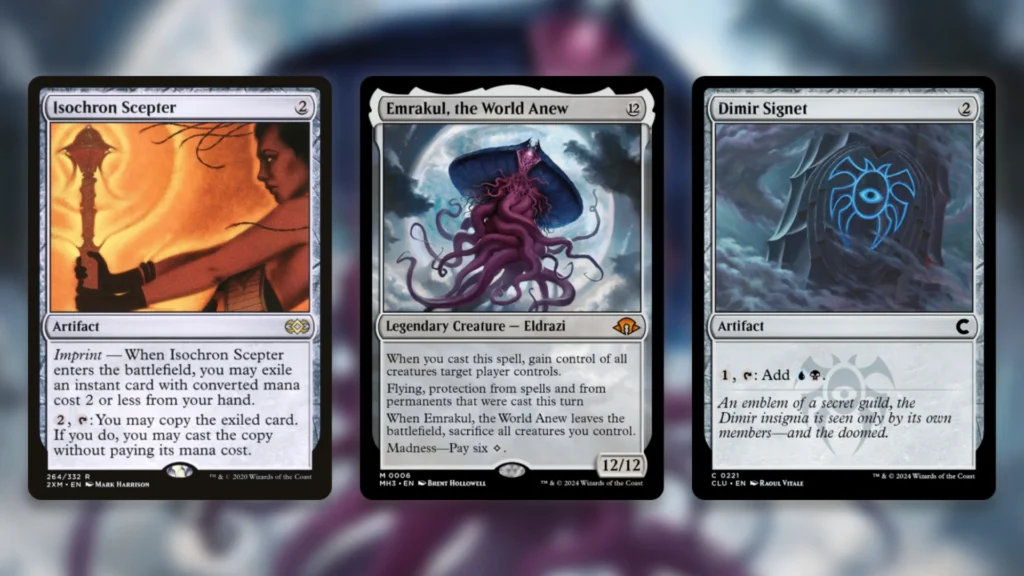In most cases, mass land denial effects in Magic: The Gathering are well-known in the worst possible way. These are largely cards that elicit sighs from playgroups when cast, and they’ve acquired a great deal of notoriety as a result. This isn’t true for all of these cards, mind you. Pale Moon is a great counterpoint here, as a potent land disruption effect that very few MTG players seem to know about.
Even for a card with just one printing 25 years ago, this is still fairly surprising. Effect like this don’t tend to fly under the radar, after all. After being mentioned by Head Designer Mark Rosewater in a new Blogatog post, however, the card seems to have gained a long-awaited second wind. With more eyes on it now than ever, perhaps it’s finally time for this hidden gem to shine.
Pale Moon MTG

It only takes a cursory glance to see that Pale Moon is very different to most mass land denial cards in MTG. Perhaps most crucially, it’s a temporary effect. The more well-known examples like Blood Moon, or even Back to Basics and Harbinger of the Sea in blue, are all ongoing. Because Pale Moon only sticks around for a single turn, however, it opens up a lot of tactical avenues for it.
Since it denies all players colored mana for the turn, it can be used to effectively “skip” a player’s turn by casting it during their upkeep. Timing it like this avoids the issue of them being able to tap their lands and float colored mana in response, since they’ll lose it when they move from upkeep to main phase. In a similar vein, you can cast it during your own upkeep to prevent opponents from interacting with you later.
Despite these powerful applications, Pale Moon is a hugely underplayed card in modern Magic. It sees no play at all in constructed, for a start. On top of that, it only shows up in 249 total Commander decks according to EDHRec. The specific lists it appears in are an eclectic bunch, but it does notably show up in a number of Mono-Blue decks. Eluge, the Shoreless Sea and Atemsis, All-Seeing are a couple of notable examples. This makes a lot of sense, since these decks play less nonbasics, and have less colored mana requirements, than most.
Keepin’ It Colorless

While it’s good to see that Pale Moon has some homes, at least, there’s a lot more this MTG hidden gem could be doing. If you dedicate a few deck slots to it, this card can become a serious powerhouse.
The best way to abuse Pale Moon is definitely to find a way to cast it repeatedly. Imprinting it on an Isochron Scepter will let you access the effect on demand, which lets you tactically deny your opponents mana on key turns. This is an area where Pale Moon outdoes the likes of Blood Moon, since you can pick and choose where to use it to avoid hindering your own game plan. A similar line is possible with Panoptic Mirror, if you really don’t want opponents interacting on your turn.
If you’re planning to abuse Pale Moon like this, you’ll want to build your mana base around it. Running a lot of basics is an easy step, but you can also include more mana rocks than usual. These won’t be affected by Pale Moon so they’ll give you mana as normal. You can even run Signets to filter your “useless” colorless mana into useful colored mana.
Another interesting application for the card is to use it as fixing for heavy colorless mana costs. Most decks struggle to get six colorless together to cast Emrakul, the World Anew via Madness, for example. Under Pale Moon, it becomes trivial. This is quite a niche application, but if you’re running Pale Moon, and ways to loop or recast it, it’s something to consider.
Overall, Pale Moon is far more than just a pale imitation of its blood-red cousin. If you’re looking for a surprising piece to shake up your next Commander game, this is an ideal pick.
Stick with us here at mtgrocks.com: the best site for Magic: The Gathering coverage. Be sure to check out our deckbuilder for your next big brew!
